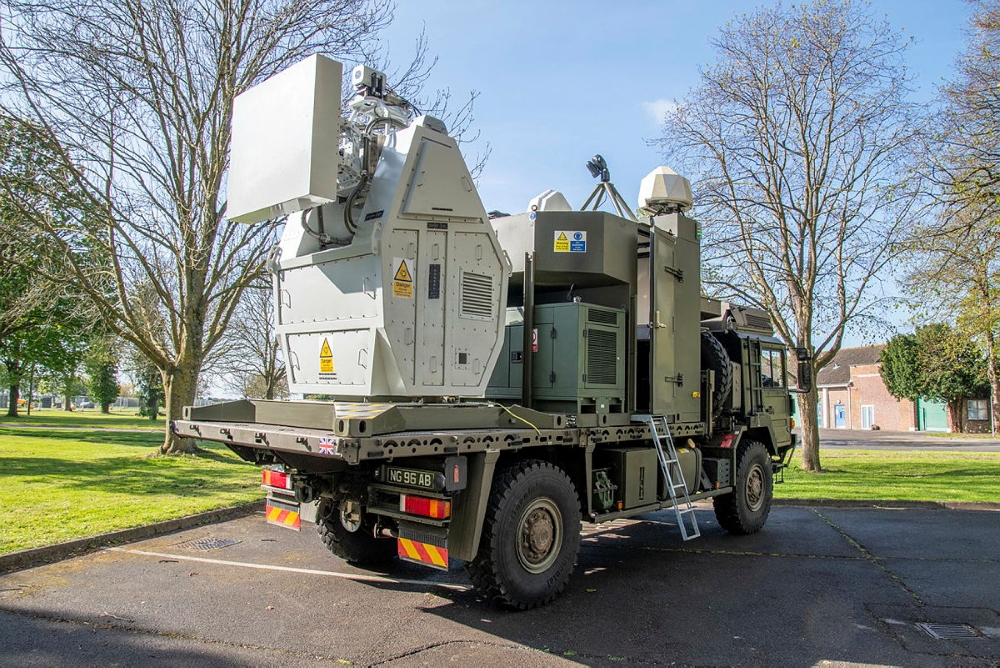
The Ministry of Defence has completed a series of trials at a weapons range in West Wales with the Project EALING demonstrator Radio Frequency Directed Energy Weapon (RFDEW), an experimental anti-drone weapon able to simultaneously down multiple targets to stop enemy swarm tactics.
EALING had been first test fired around the end of 2024, but more demanding trials have followed which have now seen more than 100 drones tracked, engaged and defecate, including simultaneous destruction of groups and swarms of drones.
EALING has been developed by an industrial team led by Thales UK, which refers to the prototype weapon system as “RapidDestroyer”. The development of the RFDEW weapon has supported around 100 highly skilled engineering and manufacturing staff in the Thales sites in Northern Ireland as well as a further 30-35 supply chain jobs in Chelmsford, Essex, that directly contributed to the development of the weapon demonstrator.
EALING uses the Qinetiq OBSIDIAN sensor suite, combining radar and electro-optic camera, to detect small drones on a range of circa 3.5 km. Engagement range is not officially declared but is superior to 1 km. Sensor and weapon can operate on the move to ensure protection to vehicle convoys.
The entire EALING system is demountable. It can be carried on a flatrack on a common HX-60 MAN SV truck used by the British Armed Forces or dropped to be operated from a fixed position.
The UK Government has invested more than £40 million in the development of RFDEW capability to date and has committed to spending at least £184 million over the next 3 years to progress Direct Energy Weapon technologies in order to deliver early operationally-relevant capability. In particular, the MOD has committed to installing 4 laser weapons on as many Type 45 destroyers by 2027 and RFDEW is also being considered for early adoption.
The trials of EALING have seen 7th Air Defence Group “taking down two swarms of drones in a single engagement” and many more drones were taken down in a variety of scenarios.
The MOD notes that Sgt Mayers, a Senior Remotely-Piloted Air Systems Operator from 106 Regiment Royal Artillery (a Reserve formation), “had the honour of being the first British soldier to bring down drones using a radiofrequency weapon”.
The RFDEW project is being delivered by Team Hersa – a collaboration between Defence Equipment & Support and the Defence Science and Technology Laboratory.
It uses high frequency radio waves to disrupt or damage critical electronic components inside drones, causing them to crash or malfunction. It is important to appreciate this because we are not talking about a jammer trying to interfere with control signals (and thus useless against drones controller by wire / optic fibre) but a true “death ray” able to fry electronic circuits.








.png)
